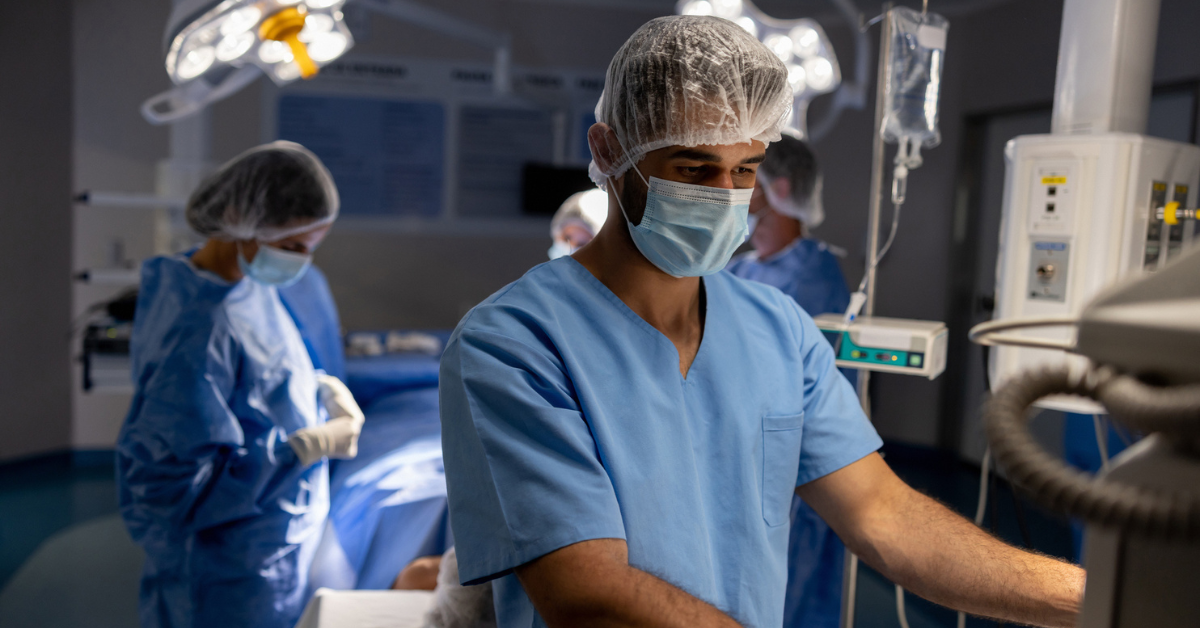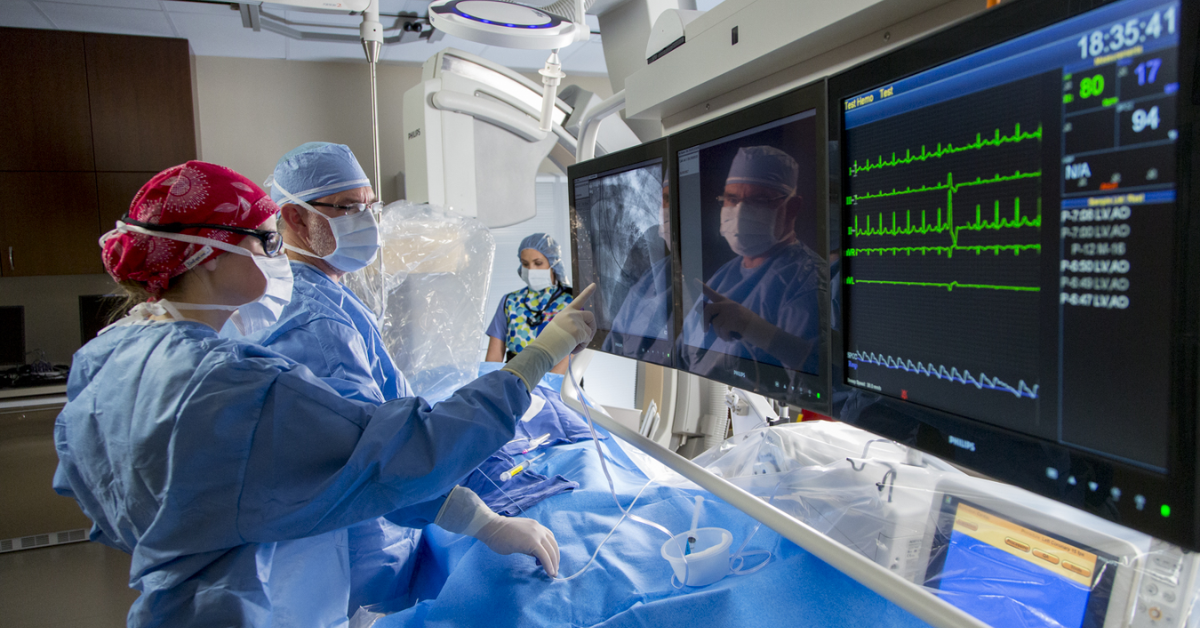
How Anesthesiologists and CRNAs Can Enhance Patient Experiences (From the OR to the Cath Lab)
Some patients don’t even want to think about a visit to the doctor, never mind preparing for a visit to an unfamiliar place such as the cath lab – but that visit could save their lives. Fear over anesthesia has been shown to cause one in four patients to postpone surgeries.
It’s important for the anesthesiologist and CRNA (certified registered nurse anesthetist) to do their best to make patients feel as comfortable as possible before, during, and also after procedures.
“One of the most stressful things you go through is surgery, whether it’s in an operating room or the cath lab,” said John Vazquez, MD, Chief Medical Officer at VitalSolution-Anesthesiology. “Even though we know the data and it’s so safe. As a patient, you still probably have some fear. But we don’t want surprises for them or us.”
Preparation: How Information Sharing Before a Procedure Helps Everybody Feel Better
When meeting with a patient before a cath lab procedure, the trained anesthesiologist and/or CRNA on the care team is often tasked with explaining complex medical procedures in layman’s terms. This visit is also key for assessing the patient’s level of fear or anxiety about the upcoming procedure.
If the visit is elective, they may have some idea as to why the tests or surgery in the cath lab is so important to their health and wellbeing. If it’s in an emergency situation, they may be dealing with other injuries that could be distracting or could be shocked by all the medical teams attending them.
Assessing Stress Levels Through Blood Pressure
Initial tests of a patient’s blood pressure could indicate how much internal stress they’re under. A rocketing BP could tell the story that even though this patient appears “fine” – they might even tell you they are OK – inside they’re on a pretty wild ride.
Importance of Introductions and Explanations During Pre-Op Visits
The cath lab team should start with introductions, explaining their role(s) to the patient along with their names. Instead of throwing around a lot of complex jargon, try to break down procedures into simple actions, giving a reason for anything that the patient will experience before, during, or after a cath lab visit.
Detailed Pre-Op Discussions Enhance Patient Understanding
Patient visit procedures vary, but I like to have both the anesthesiologist there as well as the CRNA.
John E. Vazquez, MD
“Patient visit procedures vary, but I like to have both the anesthesiologist there as well as the CRNA,” said Dr. Vazquez. “We all introduce ourselves and we spend those pre-op visits to discuss and go through the full checklist with them. We answer all of their questions and explain what’s going to happen so that when we’re in the cath lab, we can refer back to the previous discussion. ‘Remember this is the BP cuff, and it will get tight as we monitor your blood pressure throughout the procedure,’ etc.”
Before the procedure is a great time to explain the medical reasons for what is planned for the patient in the lab, the data behind the medical efforts, and how the team is prepared and well-educated to get the patient in and out without incident.
“The data is clear that anesthesia is safe,” said Dr. Vazquez. “But if you have anxiety already, you’re not going to be rational about your fears. It’s like, say you’re afraid of flying. Data shows it’s safe, but you can still have anxiety over it.”
Empowering Patients Through Detailed Information
Patients may not know enough to ask all the questions they should before a visit to the cath lab, so offer up some information and details that they may not anticipate. For example, explain the level of sedation they will be under:
- Will it be full or only a procedural sedation?
- What will they hear or feel as the procedure starts?
- Will there be loud noises or a lot of activity they should prepare for?
- How long will it take for them to wake up afterward?
Information can be soothing and empowering to patients, especially in situations where there is no frame of reference, like a first-time surgery or visit to the cath lab. It may be routine to you, but it’s a whole new experience for many patients.
What to Do During Procedures: Being the Best Guide a Patient Can Have
When people hear about the vigilance, all of the monitoring going on, it tends to make them feel better.
Sometimes we just need to know that someone will be with us through the scary parts of life, and a visit to the cath lab is no different. In fact, the anesthesiologist and CRNAs working with patients are the best buddies a patient can have.
“We all have different levels of anxiety – it may not all go away – but just hearing about how low the complication rates are, explaining what’s going to happen, just offering that human connection, that’s so helpful.”
You can let patients know that you’ll be accompanying them during the entire procedure, and check in with them if you’re separated between prep and the cath lab itself. Remember, you’ll be masked, and even though you recognize your team members, the patient might not have noticed you step away.
Ask the patient what their questions and concerns are for the procedures, and offer up reassurances that speak to the data behind what will be happening, and the trained medical team performing that day. Remember that when you’re masked, your tone of voice and your eyes show your emotions – so be genuine.
After the Cath Lab: Focus on Patient Outcomes and What Happens Next
Studies have shown that clear after-care instructions and educated patients who understand the value of taking medicine, attending follow-up appointments, and general self-care have fewer instances of hospital readmittance than those who think leaving the building means going back to living as they did before.
Patients who have good medical experiences are more likely to trust their providers as well as the hospital in general. Those who have bad experiences might decide to never seek medical treatment again and to tell others about their negative feelings, which could damage the reputation of the doctors, the care team, or the medical center as a whole.
People are living longer, and there’s a more recognized importance on what an anesthesiologist or CRNA does and how it’s such a vital role to shepherd people through these potentially stressful experiences in their lives.
“In anesthesia in general there’s more knowledge about what anesthesiologists do and what the whole care team does,” noted Dr. Vazquez. “Before, people didn’t understand the role and it was much more focused on the surgeon. But now it’s known that it’s important to know your whole care team.”
“Because we’re doing so many more procedures now – more endoscopies, preventative cath procedures, cataracts, etc. in the cath lab, people get to know our role more,” he added.
“People are living longer, and there’s a more recognized importance on what an anesthesiologist or CRNA does and how it’s such a vital role to shepherd people through these potentially stressful experiences in their lives.”
Discover Rewarding Opportunities in Anesthesia Care
The crucial role played by anesthesiologists and CRNAs in enhancing patient experiences cannot be understated. From calming fears to providing detailed explanations and personalized care, these healthcare professionals are instrumental in guiding patients through potentially stressful medical procedures with compassion and expertise.
If you’re open to new career opportunities in anesthesiology or as a CRNA and want to make a meaningful impact in patients’ lives, we invite you to explore exciting career opportunities with us. Contact us today to learn more about how you can contribute to creating positive healthcare experiences and supporting patients on their journey to wellness.
 company
company 
 (866) 755-7519
(866) 755-7519











